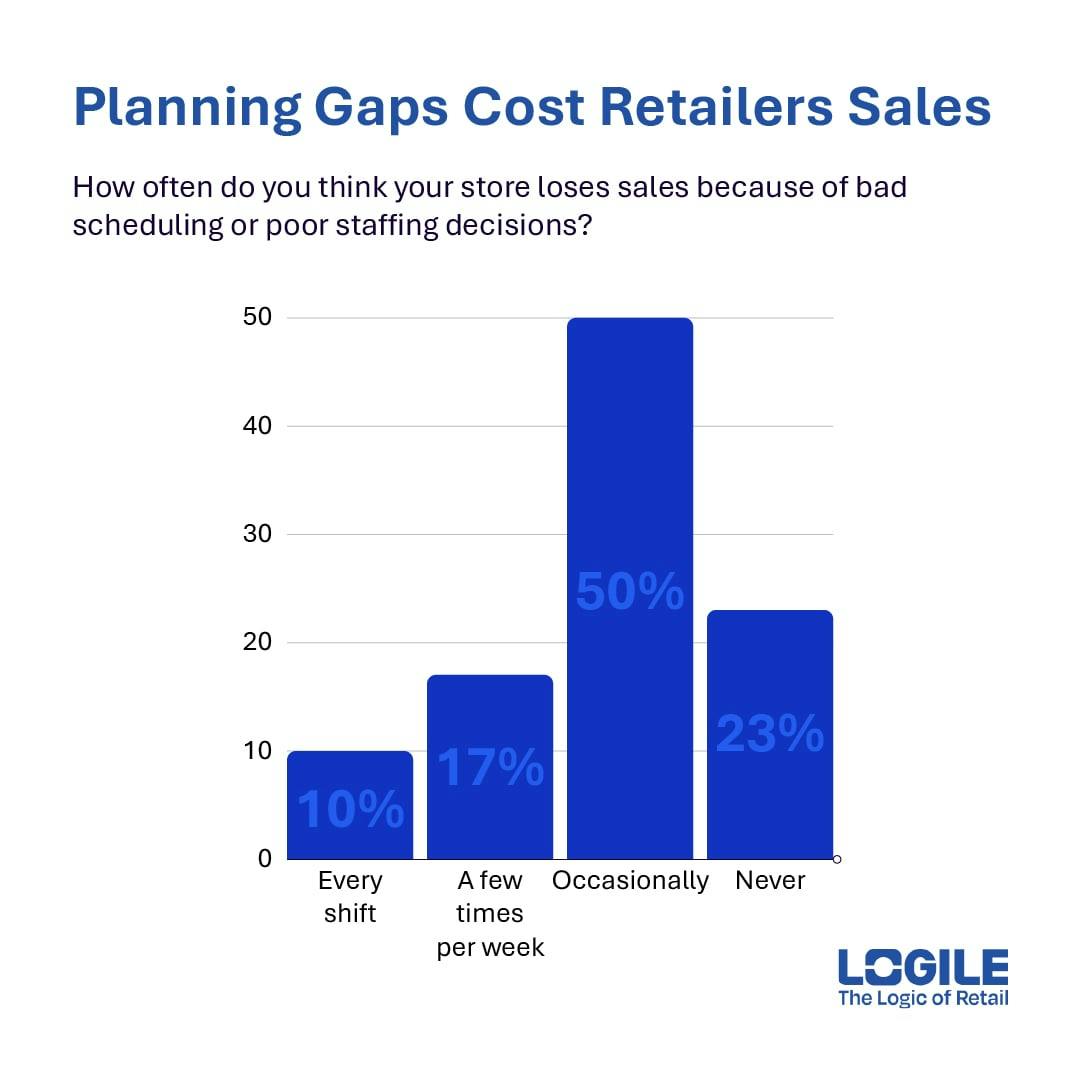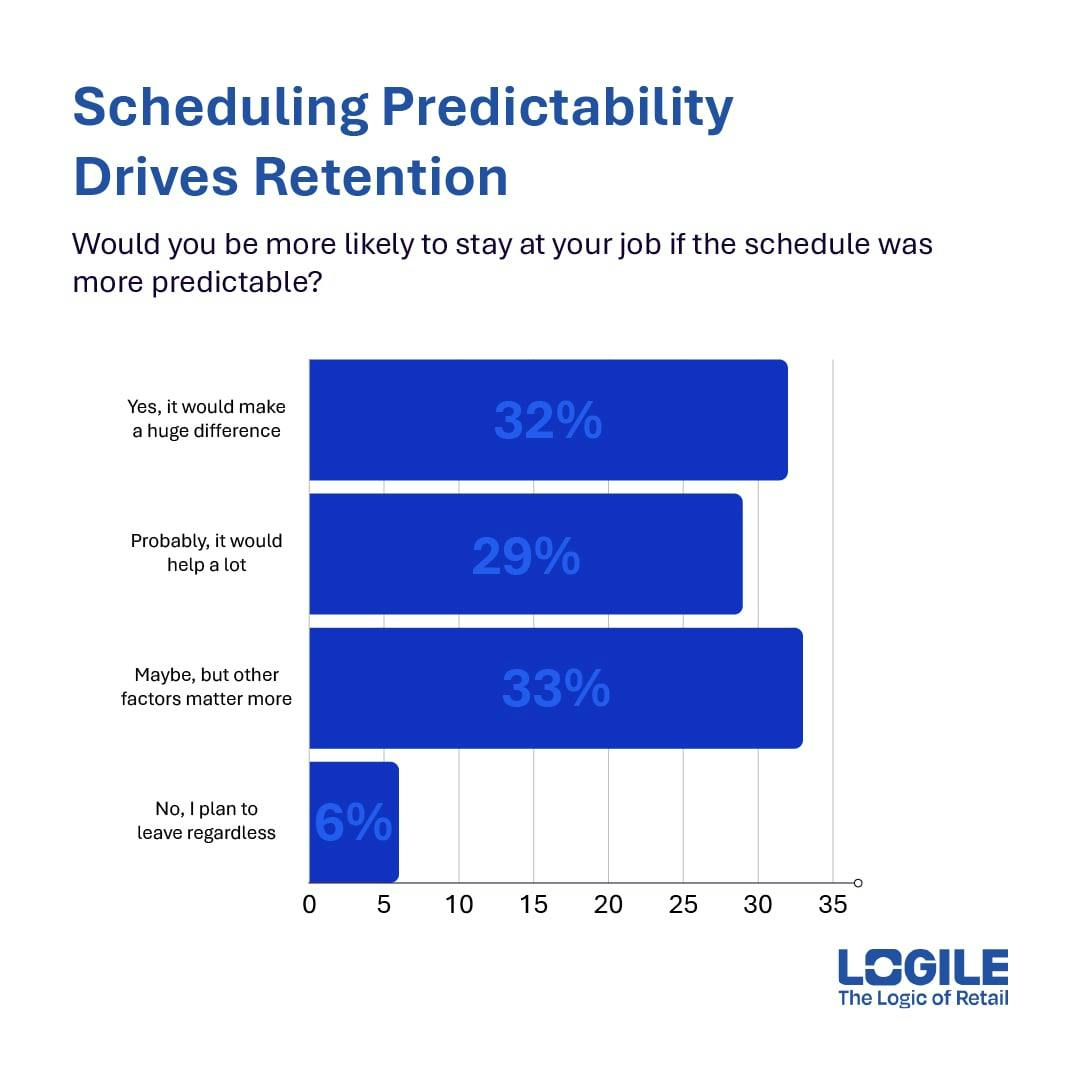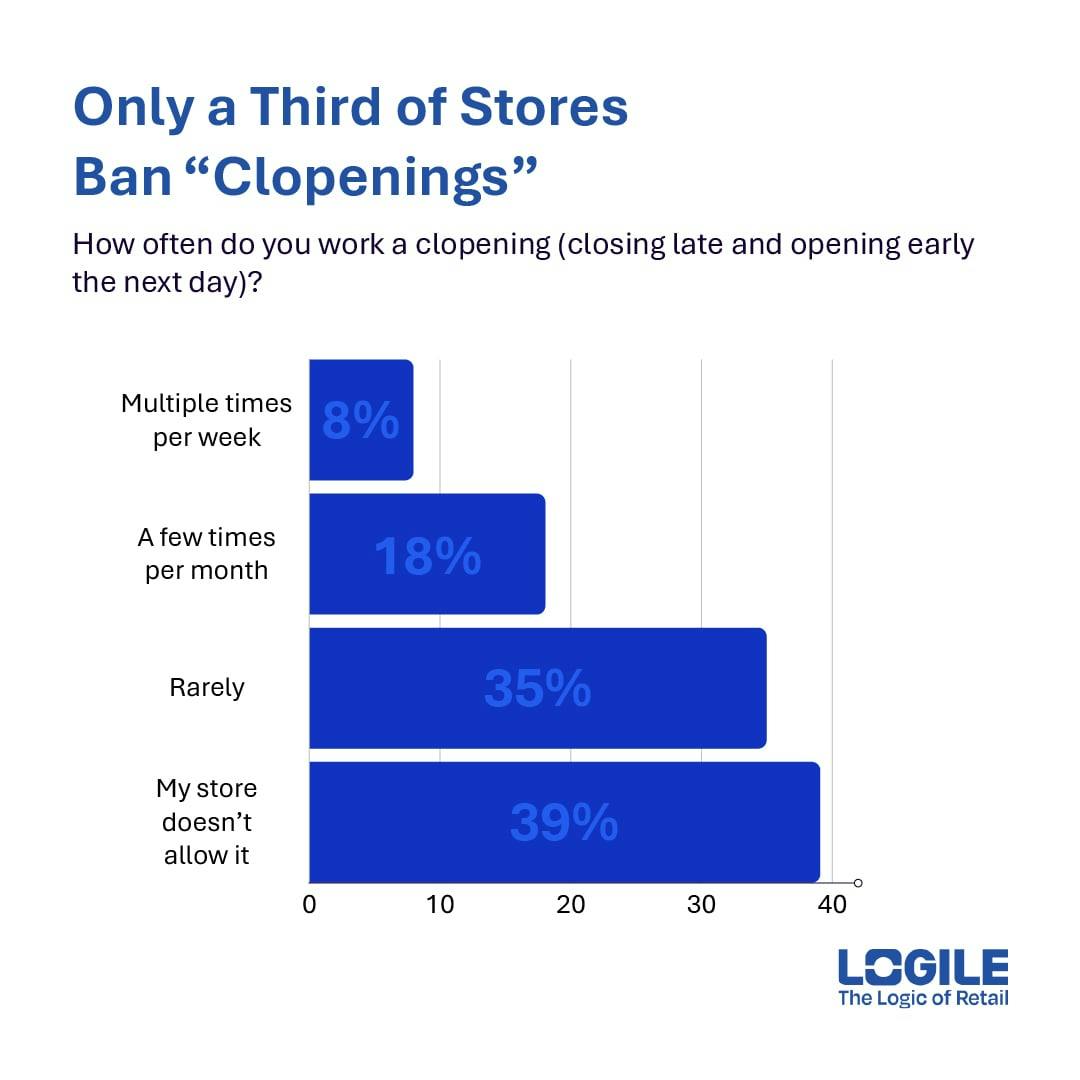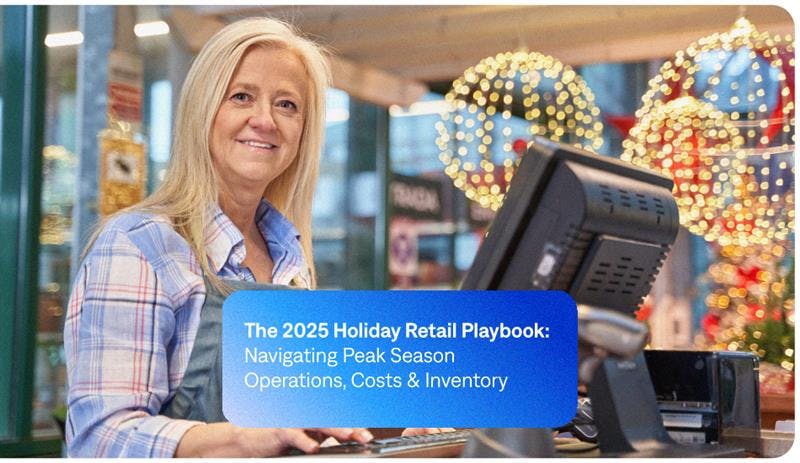New research from Logile shows retail planning isn’t translating to on-the-ground staffing, leaving stores short-handed or overstaffed at critical times.
Retailers today are under immense pressure to do more with less. From rising labor costs to tighter margins and ever-increasing customer expectations, every hour of staffing counts. Many are trying to align labor strategies through forecasting and scheduling—but whether they’re using new platforms or outdated spreadsheets, a consistent challenge remains: getting the right people in the right place at the right time doing the right things.
Despite these efforts, most retailers are still missing the mark where it matters most—execution. Schedules that look good in theory often unravel in practice, leading to chronic understaffing, frustrated teams and missed revenue opportunities. This disconnect between labor planning and what actually happens in the store—the execution gap—is quietly becoming one of retail’s most costly operational blind spots.
To better understand the scale of the problem—and what it’s costing retailers—Logile partnered with the third-party survey platform Pollfish in March 2025 to survey 500 U.S. retail store associates.
The findings of the Logile 2025 Labor Planning & Optimization Report reveal a frontline workforce stretched thin by unpredictable schedules, short-staffing and operational misalignment, and highlights the urgent need for a smarter, more flexible approach to labor optimization.
Key Findings
- 77% of retail associates say their store regularly loses sales due to poor scheduling or staffing decisions, highlighting how labor misalignment directly impacts revenue.
- Only 36% of frontline retail associates say staffing schedules consistently align with actual store traffic, suggesting a widespread disconnect between planning and real-time demand.
- 51% report their store is short-staffed during busy periods most of the time, with 25% saying this happens almost every time their store gets busy.
- 65% of workers report seeing unproductive downtime due to overstaffing a few times per month or more, pointing to labor hours being regularly misallocated.
- 82% of associates say they regularly feel overwhelmed at work due to inadequate staffing levels, and 80% say unpredictable schedules add stress to their jobs.
- 73% of workers are asked to stay late beyond their shift due to short-staffing, and 74% are pulled away from their primary duties to fill coverage gaps.
- Over one-third (38%) have missed important personal events due to last-minute scheduling changes, and an additional 21% worry about this happening to them in the future.
- Just 23% of retail workers say their weekly schedules are very predictable, and 20% still face weekly last-minute changes despite local Fair Workweek laws.
- 26% of associates are scheduled for “clopening” shifts—closing at night and opening the next morning—multiple times per month, yet only 39% say their store has policies to prevent this.
- 31% of frontline workers are actively considering quitting due to poor scheduling or lack of hours, with another 22% saying they’re close to that point if conditions don’t improve.
- 74% of frontline associates say they’re open to automated, traffic-based scheduling tools, but adoption hinges on trust—systems must consistently deliver accurate, fair schedules that earn buy-in over time.
Planning Gaps Cost Retailers Sales (and Shoppers)
Retail’s top line is taking a hit from labor planning misfires, as misaligned schedules continue to drive missed revenue opportunities. When stores are short-staffed at peak times or overstaffed during slow periods, the financial impact multiplies: customers face long lines and limited service when staffing falls short, while retailers lose money on idle labor when staffing exceeds demand.
The problem is widespread. A staggering 77% of frontline retail workers attribute their store losing sales due to poor scheduling or staffing decisions. Nearly the same share—73%—say they’ve watched customers walk out or become frustrated because there weren’t enough associates available to assist. These aren’t occasional hiccups; they’re routine consequences of schedules that fail to reflect real-world store dynamics.

Short-staffing during critical moments is especially common, with 51% of associates saying it happens most of the time their store gets busy. A quarter say it occurs nearly every time traffic spikes. On the flip side, overstaffing also takes a toll: 38% of associates have been sent home early due to too many people on the schedule, leading to lost income for workers and unnecessary payroll costs for employers.
This persistent mismatch points to a deeper issue with labor allocation. It’s not simply a matter of needing more staff or fewer shifts—it’s about aligning labor with actual demand and work requirements in real time to effectively pinpoint how many labor hours will be required—and when—for optimal service and operations. Only 36% of workers say their schedules consistently reflect store traffic patterns, revealing how much room there still is to improve the accuracy and responsiveness of retail workforce planning.
The Human Cost of Labor Planning Gaps
For many frontline retail workers, an unpredictable schedule isn’t just a workplace frustration—it’s a source of daily stress that ripples through every part of their lives. Inconsistent hours, last-minute changes, and staffing shortfalls force associates to constantly adapt, often at the expense of their well-being. These aren’t just scheduling issues—they’re deeply human ones, and the emotional toll is mounting.
80% of associates say unpredictable schedules and short-staffing add stress to their jobs, and 82% report feeling overwhelmed at work due to inadequate staffing levels. The impact often spills into personal time: 38% of workers say they’ve missed important personal events because of last-minute scheduling changes, and another 21% say they worry about that happening regularly.

The grind doesn’t stop there. 26% of associates are assigned “clopening” shifts multiple times per month, where they work late at night and return to open the store the next morning, with just 39% saying their store has policies in place to prevent this. And 73% of workers are routinely asked to stay late due to understaffing, while 74% say they’re often pulled away from their main responsibilities to help in other areas of the store.
Even basic predictability remains elusive. Only 23% of associates say their schedules are “very predictable,” and in some regions, 20% still deal with last-minute changes on a weekly basis. These figures make one thing clear: when labor planning doesn’t reflect the realities of store operations, it’s the frontline teams who pay the price—physically, emotionally and mentally.
Unpredictable Schedules Fuel a Frontline Turnover Risk
The retail industry’s labor woes aren’t solely about wages—schedule stability has emerged as a make-or-break factor for retaining frontline associates. Inconsistent hours and last-minute changes are wearing down even the most dedicated associates, pushing many to consider quitting. In today’s tight labor market, that’s more than a staffing issue—it’s a strategic risk. Retailers may be losing the very talent they need simply because they can’t provide consistent, life-friendly scheduling.
The data underscores just how central stability is to retention. 61% of associates say they’d be more likely to stay in their job if their schedule were more predictable. Yet many are already eyeing the door: 31% are actively considering quitting due to poor scheduling or lack of hours, and another 22% say they’re nearly at that point. That means more than half the workforce is at risk of walking away, driven in part by scheduling frustration.

The impact is visible on the store floor. Nearly 44% of retail workers say they’ve seen coworkers quit specifically because of scheduling issues. And for those who remain, the pressure isn’t just emotional—it’s financial. 36% of associates report working a second job, often to make up for the income unpredictability caused by inconsistent hours. Erratic scheduling is not only a threat to retention, but a destabilizing force in associates’ day-to-day lives.
The consequences go beyond shift coverage. 38% of workers say they’ve missed important personal events because of last-minute changes, with another 21% constantly worried about it happening to them. These disruptions make it hard to plan, rest or stay engaged—creating a direct line from burnout to turnover. For retailers seeking to hold onto talent, stabilizing the schedule may be one of the most powerful levers they have.
Predictable Schedules Remain Elusive Despite Fair Workweek Laws
A wave of Fair Workweek laws across major U.S. cities aimed to stabilize retail schedules by requiring retailers to provide associate schedules well in advance—often 2+ weeks advance notice—and limiting last-minute changes, on-call shifts and back-to-back clopenings. Retailers subject to these mandates face hefty fines and premiums for noncompliance. According to our survey, these regulations have made a measurable difference for associates in some areas. In cities with laws on the books—like New York and San Francisco—retail associates are less likely to face extreme scheduling abuses. For example, 48% of workers in law-covered cities say their store prohibits clopening shifts, compared to just 38% in unregulated areas. Similarly, 68% of workers under these laws report never being sent home early without pay, versus 62% elsewhere.

But while protections have curbed the most egregious practices, overall schedule predictability remains elusive—even in regulated environments. Just 23% of workers in law-covered areas describe their schedules as “very predictable,” significantly lower than the 36% who say the same in areas without such laws. This unexpected trend suggests that retailers are still struggling overall to guarantee consistency—and may be suffering additional financial losses via penalties in the process. Regulations may help set a baseline, but they don’t necessarily fix the core planning gaps that lead to volatility in the first place.
In fact, some unpredictability metrics are worse in regulated areas. 20% of workers in Fair Workweek cities experience last-minute schedule changes weekly—nearly double the 11% reported in areas without such mandates. And 16% in regulated regions describe their schedules as “completely unpredictable,” more than twice the 7% in unregulated areas. These figures highlight a key reality: achieving truly stable, associate-friendly schedules weeks in advance requires smarter forecasting, planning and predictive scheduling systems.
Retailers must rethink how they plan and execute labor strategies. The data suggests that advanced labor optimization tools—like AI-powered forecasting and reforecasting, labor modeling and scheduling—are essential to creating compliant, consistent and accurate demand-driven schedules. When done right, predictive labor systems can not only help retailers meet regulatory standards, but also proactively build workweeks that are both operationally efficient and respectful of associates’ time.
AI-Powered Labor Planning and the Future of Workforce Management
Retail associates aren’t shying away from automation—in fact, many are optimistic about what AI can do to improve the day-to-day realities of their jobs. A strong majority of frontline workers say they support the use of AI-driven scheduling tools that align labor with real-time customer traffic and operational needs. Rather than seeing it as a threat, workers view automation as a pathway to less stress, better service and smoother store operations.
According to our survey, 74% of retail associates are open to using automated, demand-driven scheduling systems in their store. When asked about the benefits, associates pointed to improved customer service (21%), more consistent operations (19%), less stress on staff (13%), and more predictable schedules (11%) as top outcomes they hope to see. These responses highlight a growing appetite for smart systems that take the guesswork and chaos out of daily staffing.

Building trust is essential to long-term adoption. As retailers roll out AI-powered scheduling, success hinges on delivering schedules that are so accurate and aligned with real-time needs, even down to the task level, that frontline teams can trust the system for adequate coverage without intervention. The ultimate goal isn’t just automation for its own sake, but a shift toward labor planning that eliminates inefficiency, reduces bias and empowers frontline teams with schedules they can rely on.
Conclusion
Retailers can no longer treat labor planning and scheduling as disconnected functions. Success in today’s complex retail environment requires a holistic approach—one that connects accurate forecasting, flexible labor modeling, smart scheduling and real-time execution. The organizations that get this right won’t just reduce scheduling complaints or improve compliance; they’ll unlock measurable gains in customer service, associate retention and overall store performance.
Logile’s AI-driven Connected Workforce labor planning platform is designed to support this shift. It enables retailers to forecast demand with greater precision, model staffing needs down to the unique store- and department-specific levels, and generate optimized schedules that reflect both operational goals and the real-world constraints, preferences and availability of the front line. With smarter tools enabling the highest accuracy and actionable insights, Logile helps brands move from reactive scheduling to proactive, predictive workforce management.
“There’s a clear disconnect between plan and practice. Retailers have made meaningful strides in prioritizing workforce initiatives, but our research shows that many are still missing the opportunity to fully connect their planning efforts with store-level reality,” said Purna Mishra, Founder and CEO, Logile. “By integrating real-time demand data and modeling labor needs more accurately, retailers can close the loop between planning and execution—improving service, supporting staff and strengthening the bottom line.”
Ultimately, getting labor right isn’t just a compliance issue—it’s a performance opportunity. As labor challenges continue to evolve, the retailers that invest in integrated, demand-driven planning to complement flexible scheduling will be best positioned to deliver for their customers and retain the talent they need to thrive.
Survey Methodology
Logile used the third-party survey platform Pollfish to conduct an online survey in March 2025 of 500 U.S. frontline retail store associates (holding non-manager positions) aged 18+. Researchers reviewed all responses for quality control.
Recent Posts
UK Retail Budget 2025: What Retailers Need to Respond to Now
2025-12-02
The 2025 UK Budget is reshaping retail economics. Rising labour costs, higher rates, tighter margins—here's what retail leaders must prioritize now.
Read More
The 2025 Holiday Retail Playbook: Navigating Peak Season Operations, Costs & Inventory
2025-11-18
Fewer staff, higher costs, earlier shopping peaks—2025 holiday retail is different. Get strategies for staffing, inventory, and customer satisfaction to win this season.
Read More
Counter Intelligence for Grocery Scale Management: Centralized. Simplified. Reliable.
2025-11-13
Discover how modern grocery scale management solutions solve legacy challenges with real-time visibility, rapid ad-week updates, and centralized pricing control. Learn key features that streamline fresh department operations, reduce compliance risk, and turn audit prep from hours into minutes.
Read More


